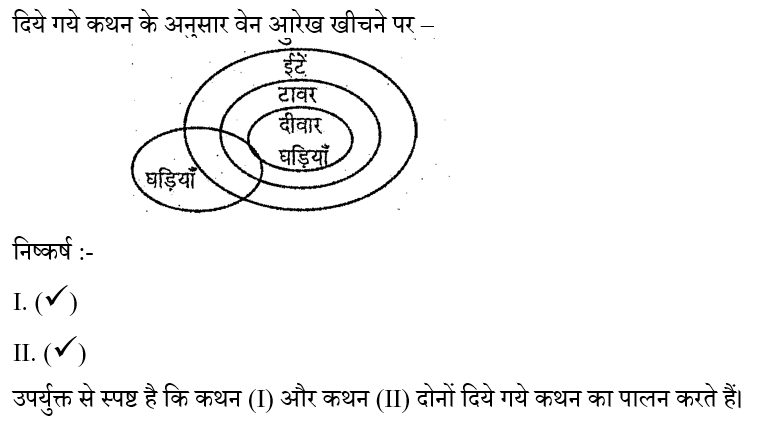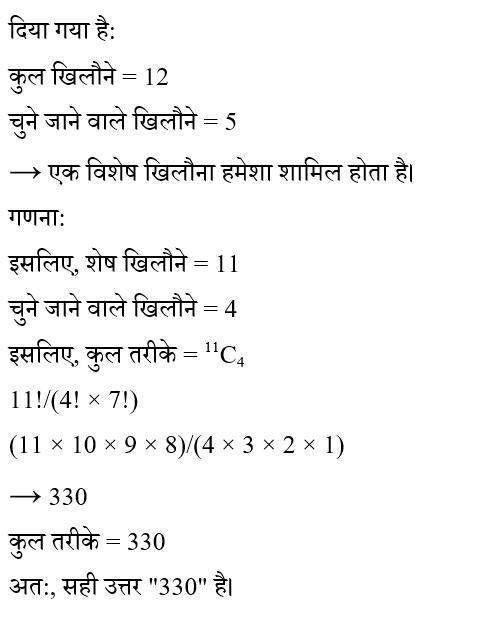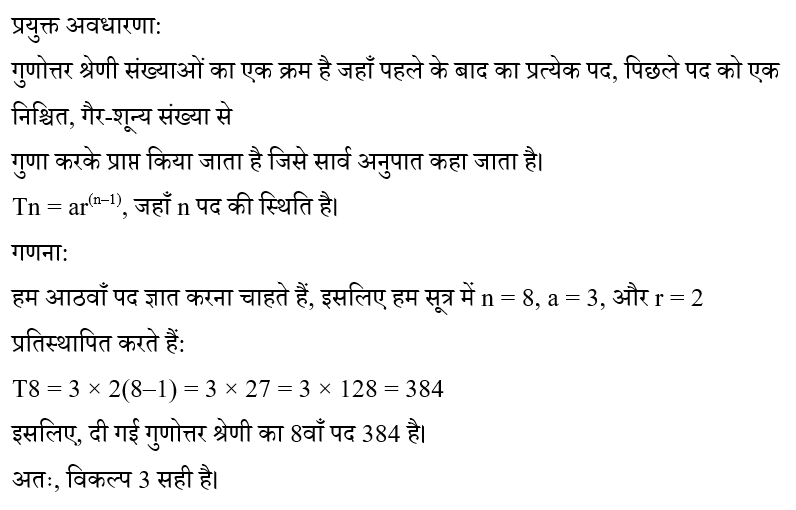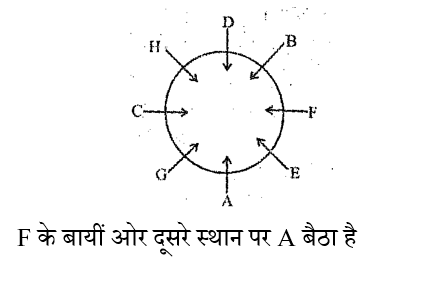Question 1:
Which letter in the word FATHER is at the same position as it is in the alphabet?
FATHER शब्द में कौन-सा अक्षर उसी स्थान पर है, जिस पर वह वर्णमाला में है ?
Question 2:
Three statements are given followed by two conclusions I and II. Consider the information given in the statements as true even if it seems to be at variance with commonly known facts and then decide which of the given conclusions logically follows from the statements.
तीन कथन और उनके बाद दो निष्कर्ष I और II दिए गए है । कथनों में दी गई जानकारी को सत्य मानते हुए विचार करें, भले ही वह सामान्यतः ज्ञात तथ्यों से भिन्न प्रतीत होती हो और बताए कि दिए गए कौन-से निष्कर्ष, कथनों का तार्किक रूप से पालन करते हैं।
Statements: / कथनः
कुछ घड़ियां, दीवार - घड़ियां हैं। / Some watches are wall-clocks.
सभी दीवार - घड़ियां, टावर हैं। / All wall-clocks are towers.
सभी टावर, ईटे हैं। / All towers are bricks.
Conclusions: / निष्कर्षः
(I) कुछ ईंटे घड़ियां हैं। / Some bricks are watches.
(II) कुछ दीवार - घड़ियां, ईटे हैं। / Some wall-clocks are bricks.
Question 3:
How many meaningful English words can be formed from the letters OEHM using each letter only once in each word?
प्रत्येक शब्द में केवल एक बार प्रत्येक वर्ण का प्रयोग करके OEHM वर्णों से कितने सार्थक अंग्रेजी शब्द बनाए जा सकते हैं?
Question 4:
If 8 + 6 + 1 = 168 and 5 + 2 + 1 = 125, then 1 + 2 + 3 = ?
यदि 8 + 6 + 1 = 168 तथा 5 + 2 + 1 = 125 हो, तो 1 + 2 + 3 = ?
Question 5:
In the following questions, select the odd letter/letter pair from the given alternatives.
निम्नलिखित प्रश्नों में दिए गए विकल्पों में से विषम अक्षर / अक्षर युग्म को चुनिए ।
Question 6:
If four dice are thrown simultaneously, what is the probability that the sum of the numbers appearing on them is 25?
यदि चार पासों को एकसाथ उछाला जाता है, तो वह प्रायिकता क्या है कि उनपर दिखाई देने वाली संख्याओं का योग 25 है?
Question 7:
In how many different ways can 5 toys be selected from a group of 12 toys if a particular toy is always included?
12 खिलौनों के समूह में से 5 खिलौनों को कितने अलग- अलग तरीकों से चुना जा सकता है यदि एक विशेष खिलौना हमेशा शामिल किया जाता है?
Question 8:
What is the arithmetic mean of 50 terms of an AP with first term 4 and common difference 4?
प्रथम पद 4 तथा सार्व अंतर 4 वाली समांतर श्रेणी के 50 पदों का अंकगणितीय माध्य क्या है?
Question 9:
What is the 8th term of the geometric progression (G.P.) 3, 6, 12, 24, ...?
गुणोत्तर श्रेणी (G.P.) 3, 6, 12, 24, ... का 8 वाँ पद क्या है?
Question 10:
Eight persons named A to H are sitting around a round table facing the centre in such a way that G is seated immediately to the left of A and third to the right of D. Two persons are seated between A and B. C is not the immediate neighbour of B. E and F are seated next to each other. F is not the immediate neighbour of A and D. C is the immediate neighbour of G. Who is seated second to the left of F?
A से H तक नामक आठ व्यक्ति एक गोल मेज के केंद्र की ओर मुंह करके इस तरह बैठे हैं कि G, A के बाईं ओर निकटतम स्थान पर और D के दाईं ओर तीसरे स्थान पर बैठा है। A और B के बीच दो व्यक्ति बैठे हैं। C, B का निकटतम पड़ोसी नहीं है। E और F एक दूसरे के बगल में बैठे हैं। F, A और D का निकटतम पड़ोसी नहीं है | C, G का निकटतम पड़ोसी है।F के बाईं ओर दूसरे स्थान पर कौन बैठा है ?







